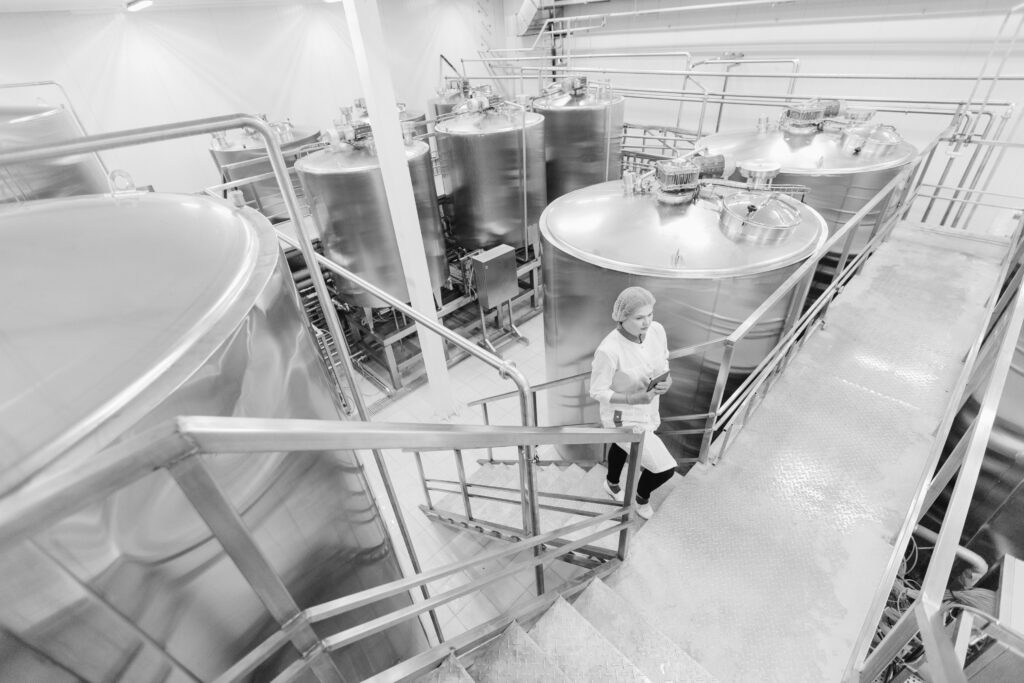Maximizing Efficiency and Minimizing Costs: The Benefits of Real-time Quality Control in Manufacturing
The Importance of Quality Control in Manufacturing
Quality control is an essential process in manufacturing that ensures products meet the required standards before they are released to the market. Quality control helps manufacturers identify problems early in the production process, which can save time, money, and resources. In the past, quality control was done manually, which was time-consuming, and errors could easily be missed. However, with the advancements in technology, manufacturers can now implement real-time quality control, which is faster, more efficient, and more accurate.
Real-time quality control involves monitoring the production process in real-time using sensors and other technologies. This allows manufacturers to detect problems as soon as they occur, which enables them to make immediate adjustments to ensure the product’s quality is not compromised. Real-time quality control is becoming increasingly popular in manufacturing due to its numerous benefits, which we will explore in this article.

Real-time Quality Control vs Traditional Quality Control
Traditional quality control involves manually inspecting products at various stages of the production process to identify defects or errors. This process can be time-consuming, and errors may be missed due to human error. Real-time quality control, on the other hand, involves the use of sensors and other technologies to monitor the production process continuously. This allows manufacturers to detect problems as soon as they occur, which enables them to take immediate action to prevent defects from occurring.
Real-time quality control is also more efficient than traditional quality control because it can monitor multiple processes simultaneously. This means that manufacturers can identify problems in real-time, which allows them to take action immediately. Additionally, real-time quality control is more accurate than traditional quality control because it eliminates the possibility of human error.
Benefits of Real-time Quality Control in Manufacturing
Real-time quality control has many benefits for manufacturers, including:
1. Reduced Downtime
Downtime is a significant cost for manufacturers because it can lead to missed deadlines, decreased production, and lost revenue. Real-time quality control can significantly reduce downtime by detecting problems as soon as they occur, which allows manufacturers to take immediate action to prevent further downtime. This ensures that production runs smoothly and efficiently, which maximizes output and reduces costs.
2. Improved Product Quality
Real-time quality control can improve product quality by detecting defects early in the production process. This ensures that products meet the required standards before they are released to the market, which increases customer satisfaction and reduces the risk of product recalls. Improved product quality also leads to increased customer loyalty, which can help manufacturers gain a competitive edge in the market.
3. Cost Savings
Real-time quality control can lead to significant cost savings for manufacturers. By detecting problems early in the production process, manufacturers can avoid costly rework and scrap costs. Real-time quality control can also reduce the need for manual inspections, which can save time and labor costs. Additionally, by improving product quality, manufacturers can reduce the risk of product recalls, which can be costly both financially and in terms of brand reputation.
4. Improved Customer Satisfaction
Real-time quality control can lead to improved customer satisfaction by ensuring that products meet the required standards before they are released to the market. This reduces the risk of customer complaints, returns, and product recalls, which can all have a negative impact on brand reputation. Improved customer satisfaction can also lead to increased customer loyalty, which can help manufacturers gain a competitive edge in the market.

Real-time Quality Control Technologies
Real-time quality control technologies include sensors, cameras, and other monitoring devices that can detect problems in real-time. These technologies can be used to monitor various aspects of the production process, including temperature, humidity, pressure, and other variables. Real-time quality control technologies can also be used to detect defects in products, such as cracks, dents, and other imperfections.
Real-time quality control technologies can be integrated into existing manufacturing systems, which makes implementation easy and cost-effective. These technologies can also be customized to meet the specific needs of each manufacturer, which ensures that the system is tailored to the manufacturer’s unique requirements.

Implementation of Real-time Quality Control in Manufacturing
The implementation of real-time quality control in manufacturing involves several steps, including:
1. Identifying the Need for Real-time Quality Control
Manufacturers need to identify the areas of their production process that require real-time quality control. This involves analyzing the production process to identify potential areas of risk and determining which quality control technologies are necessary to mitigate those risks.
2. Developing a Real-time Quality Control Plan
Once the need for real-time quality control has been identified, manufacturers need to develop a plan for implementing the system. This involves determining which technologies are required, identifying the necessary resources, and developing a timeline for implementation.
3. Implementation and Testing
After the real-time quality control plan has been developed, the system needs to be implemented and tested. This involves installing the necessary technologies, training staff, and testing the system to ensure that it is working correctly.
4. Monitoring and Continuous Improvement
Once the real-time quality control system has been implemented, it needs to be monitored continuously to ensure that it is working correctly. Manufacturers also need to identify areas for improvement and make necessary adjustments to the system to ensure that it is meeting their needs.
Cost Implications of Real-time Quality Control

The cost of implementing real-time quality control in manufacturing varies depending on the size of the company, the complexity of the production process, and the specific quality control technologies required. However, the cost of not implementing real-time quality control can be much higher. Product recalls, missed deadlines, and lost revenue can all have a significant impact on a company’s bottom line.
Real-time quality control can also lead to cost savings by reducing downtime, eliminating the need for manual inspections, and reducing the risk of scrap and rework costs. Improved product quality can also lead to increased customer loyalty, which can help manufacturers gain a competitive edge in the market.
Cost Implications of Real-time Quality Control
The cost of implementing real-time quality control in manufacturing varies depending on the size of the company, the complexity of the production process, and the specific quality control technologies required. However, the cost of not implementing real-time quality control can be much higher. Product recalls, missed deadlines, and lost revenue can all have a significant impact on a company’s bottom line.
Real-time quality control can also lead to cost savings by reducing downtime, eliminating the need for manual inspections, and reducing the risk of scrap and rework costs. Improved product quality can also lead to increased customer loyalty, which can help manufacturers gain a competitive edge in the market.
Case Studies of Successful Implementation of Real-time Quality Control
Several companies have successfully implemented real-time quality control in their manufacturing processes, resulting in significant improvements in efficiency and cost savings. For example:
Toyota
Toyota implemented real-time quality control in its production lines, which helped to reduce the number of defects in its cars. This led to significant cost savings and improved customer satisfaction.
Intel
Intel implemented real-time quality control in its manufacturing process, which helped to reduce downtime and increase output. This led to significant cost savings and increased revenue.
General Electric
General Electric implemented real-time quality control in its aviation division, which helped to improve product quality and reduce the risk of product recalls. This led to increased customer satisfaction and improved brand reputation.

Future of Real-time Quality Control in Manufacturing
Real-time quality control is becoming increasingly popular in manufacturing due to its numerous benefits, including reduced downtime, improved product quality, cost savings, and improved customer satisfaction. As technology continues to advance, we can expect to see even more sophisticated real-time quality control systems that use artificial intelligence and machine learning to detect problems and make adjustments in real-time.
The future of real-time quality control in manufacturing is bright, and we can expect to see more companies implementing these systems in the coming years to gain a competitive edge in the market.
Conclusion
Real-time quality control is essential in manufacturing because it helps to ensure that products meet the required standards before they are released to the market. Real-time quality control has numerous benefits, including reduced downtime, improved product quality, cost savings, and improved customer satisfaction. By implementing real-time quality control, manufacturers can gain a competitive edge in the market and achieve their goals of maximizing efficiency and minimizing costs. As technology continues to advance, we can expect to see even more sophisticated real-time quality control systems that will transform the manufacturing process.
